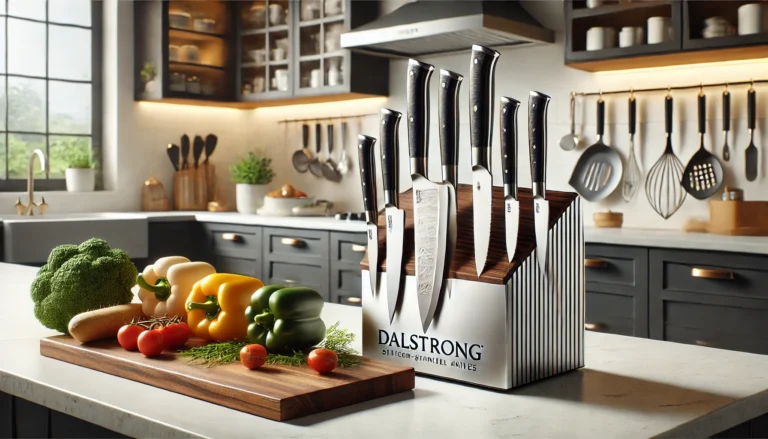
Deburring is an essential step in various DIY and home improvement projects. It involves removing rough edges or burrs from materials such as metal, wood, and plastic. While there are specialized tools for this task, did you know that a pocket knife can be a versatile and effective tool for deburring? In this blog post, we’ll explore how a pocket knife can be used for deburring, making it a must-have in your toolkit.
A Pocket Knife Can Be Used to Deburr ? (Short Answer)
A pocket knife can be a handy tool for deburring because of its sharp edge. It’s great for scraping off small burrs from materials like metal or plastic. Hold the knife at an angle and lightly shave away the rough parts. This method is quick and easy, making impromptu deburring jobs a breeze. Always use caution to avoid any accidents while handling the knife.
What is Deburring?
Deburring is the process of smoothing out rough edges or burrs that are left behind after cutting, drilling, or machining materials. Burrs can be sharp and hazardous, posing a risk of injury and affecting the functionality of the project. Therefore, deburring is crucial for both safety and aesthetics.
The Versatility of a Pocket Knife
A pocket knife is a compact and portable tool that many people carry for various tasks. From cutting rope to opening packages, its uses are endless. However, one lesser-known use of a pocket knife is deburring. Its sharp blade and ergonomic design make it an excellent option for smoothing out rough edges.
Why Choose a Pocket Knife for Deburring?
1. Convenience and Portability
A pocket knife is small enough to carry with you wherever you go. Unlike specialized deburring tools, which can be bulky and expensive, a pocket knife fits comfortably in your pocket or tool belt.
2. Versatility
A pocket knife is not just for deburring. Its multifunctional nature means you can use it for a variety of tasks, making it a valuable addition to your toolkit.
3. Precision
A pocket knife’s sharp blade allows for precise cuts and smooth finishes. Whether you’re working on metal, wood, or plastic, a pocket knife can help you achieve a professional look.
How to Use a Pocket Knife for Deburring
Step 1 – Safety First
Before you start, ensure you are wearing safety gloves and goggles. Burrs can be sharp, and proper safety gear will protect you from potential injuries.
Step 2 – Secure the Material
Place the material you need to deburr on a stable surface. Use clamps if necessary to keep it from moving while you work.
Step 3 – Identify the Burrs
Examine the edges of the material closely to identify where the burrs are located. This will help you focus your efforts on the areas that need attention.
Step 4 – Use the Blade’s Edge
Hold the pocket knife at a slight angle to the edge of the material. Gently scrape the blade against the burrs, applying consistent pressure. Move the knife in a controlled manner to avoid damaging the material.
Step 5 – Check Your Progress
Periodically stop and check your progress. Run your fingers along the edge to feel for any remaining rough spots. Continue deburring until the edge is smooth.
Deburring Metal with a Pocket Knife
Types of Metal
Different metals have different properties, which can affect the deburring process. Softer metals like aluminium are more accessible to deburr, while harder metals like steel may require more effort.
Blade Selection
A sharp, sturdy blade is essential for deburring metal. Ensure your pocket knife is in good condition and sharp enough to handle the task.
Technique
Use slow, deliberate strokes to remove burrs from metal. Apply steady pressure and maintain control to avoid slipping and causing injury.
Deburring Wood with a Pocket Knife
Types of Wood
Wood can vary greatly in hardness and texture. Softer woods like pine are more accessible to deburr, while harder woods like oak may require more effort.
Blade Selection
A pocket knife with a fine, sharp blade is ideal for deburring wood. Avoid using a serrated blade, as it can cause splintering.
Technique
Gently scrape the blade along the grain of the wood to remove burrs. Be mindful of the direction of the grain to avoid damaging the wood.
Deburring Plastic with a Pocket Knife
Types of Plastic
Plastics come in various types and thicknesses. Softer plastics like PVC are easier to deburr, while more rigid plastics like acrylic may require more effort.
Blade Selection
A sharp blade is crucial for deburring plastic. Ensure your pocket knife is well-maintained and free of nicks.
Technique
Use controlled, even strokes to remove burrs from plastic. Apply gentle pressure to avoid gouging the material.
Tips for Effective Deburring with a Pocket Knife
1. Keep the Blade Sharp
A dull blade will make deburring more complex and less effective. Regularly sharpen your pocket knife to ensure optimal performance.
2. Use Light Pressure
Applying too much pressure can damage the material and make the process more challenging. Use light, consistent pressure for the best results.
3. Work in Good Lighting
Proper lighting will help you see the burrs more clearly and ensure a smooth finish.
Common Mistakes to Avoid
1. Using a Dull Blade
A dull blade can make deburring more complex and less effective. Keep your pocket knife sharp for the best results.
2. Applying Too Much Pressure
Excessive pressure can damage the material and make the process more challenging. For the best results, use light, consistent pressure.
3. Rushing the Process
Deburring requires patience and precision. Take your time to ensure a smooth, professional finish.
Benefits of Using a Pocket Knife for Deburring
1. Cost-Effective
A pocket knife is a cost-effective alternative to specialized deburring tools. It offers versatility and value for money.
2. Easy to Maintain
Pocket knives are easy to maintain and keep in good condition. Regular sharpening and cleaning will ensure they remain reliable tools.
3. Readily Available
Most people already own a pocket knife, making it a convenient option for deburring tasks.
Real-Life Examples of Deburring with a Pocket Knife
Example 1 – Home Improvement
John, a DIY enthusiast, used his pocket knife to deburr metal brackets for a shelving project. The knife provided precise control and a smooth finish, saving him time and effort.
Example 2 – Outdoor Adventure
Sarah, an outdoor adventurer, used her pocket knife to deburr plastic tent stakes. The knife’s sharp blade made quick work of the burrs, ensuring the stakes were safe to handle.
Example 3 – Craft Projects
Emily, a crafting hobbyist, used her pocket knife to deburr wooden pieces for a home decor project. The knife allowed her to achieve a professional finish without investing in specialized tools.
Conclusion:
A pocket knife is a versatile and valuable tool for various tasks, including deburring. Whether you’re working with metal, wood, or plastic, a pocket knife can provide precise control and a smooth finish. By incorporating a pocket knife into your toolkit, you can save time, effort, and money on your DIY and home improvement projects.
Ready to improve your deburring skills? Start practising with your pocket knife today and experience the benefits for yourself.
FAQs
Yes, a pocket knife can effectively be used for deburring. With proper technique and a sharp blade, rough edges can be removed from various materials.
A pocket knife can be used to deburr metals, wood, and plastics. The key is to select the correct blade and use the proper technique for each material.
Sharpen your pocket knife regularly using a whetstone or a knife sharpener. Maintaining a sharp edge is crucial for efficient and safe deburring.
Yes, it is safe if you use proper techniques and handle the knife carefully. Always use controlled, even strokes and keep your fingers away from the blade.
Using a pocket knife for deburring is cost-effective, versatile, and convenient. It provides precise control and a smooth finish without the need for specialized tools.






